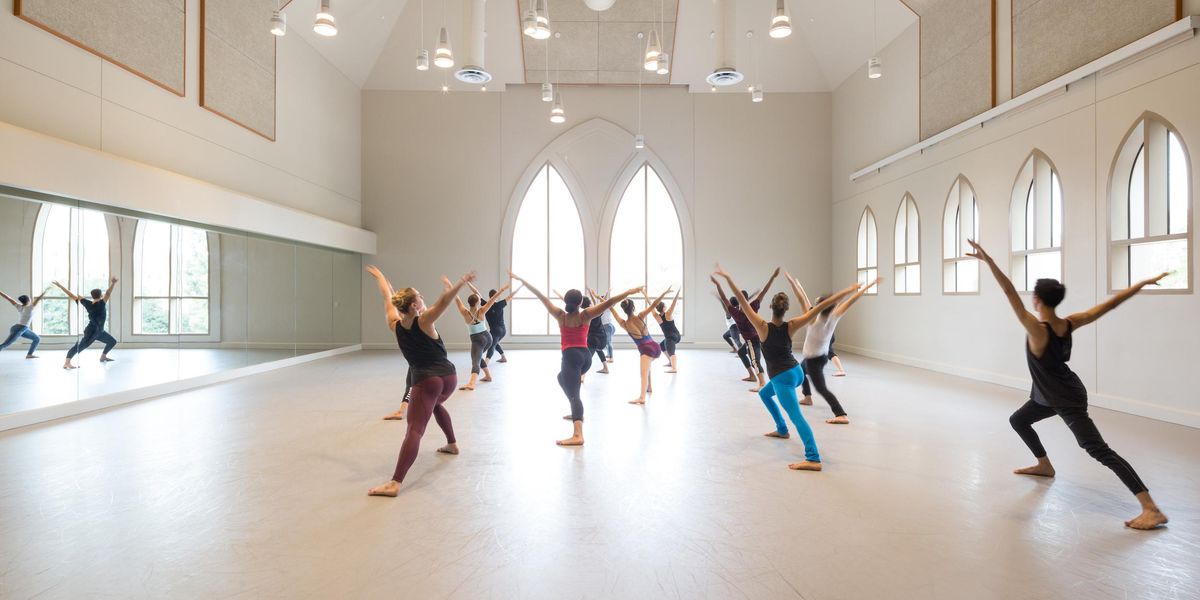More Than a Prodigy
When Tiler Peck was 3, her mother, a dance teacher in Bakersfield, California, taught her two two-minute dance routines which the toddler zipped through with flair. At 9 she started on pointe and a few months later danced Clara (on pointe) in the Radio City Christmas Spectacular in California. By 12 she had danced the Black Swan variation. Peck joined New York City Ballet’s corps at 16 and performed Dewdrop in The Nutcracker later that year. Now 25, the former prodigy appears frequently on the NYCB stage as a principal dancer with an
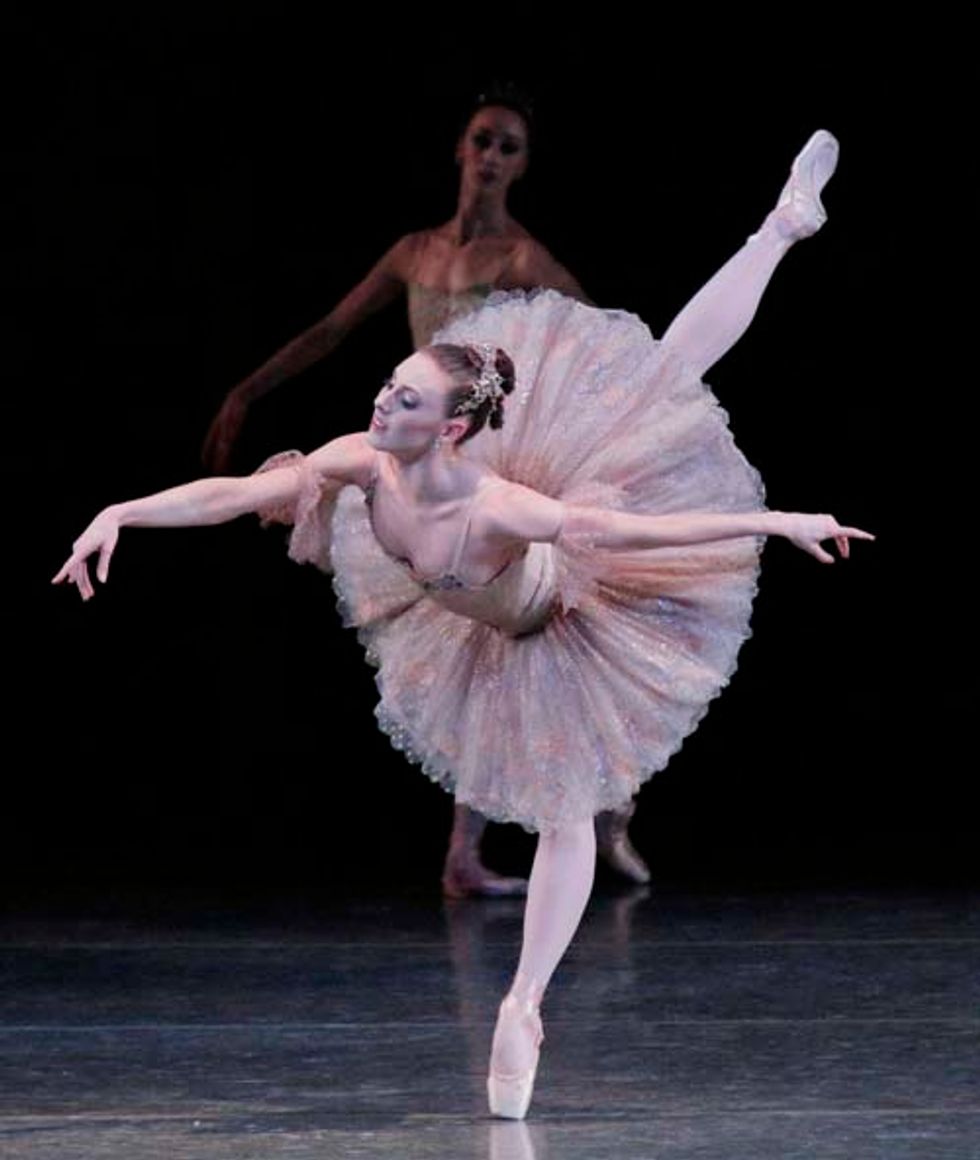
ascending career.
Right: Tiler Peck in Peter Martins’
Sleeping Beauty. Photo by Paul Kolnik, Courtesy NYCB.
Baby ballerinas have commanded the public’s fascination ever since George Balanchine discovered Irina Baronova and Tamara Toumanova, both age 12, and Tatiana Riabouchinska, 14, students of former Imperial ballerinas Olga Preobrajenska and Mathilde Kschessinska. Balanchine engaged them as stars of the Ballets Russes de Monte Carlo, and the publicity surrounding the prodigies helped revive interest in ballet in the 1930s after Sergei Diaghilev’s death. Their careers served as a highbrow analog to the craze for child performers like Shirley Temple in Depression-era Hollywood.
Like young concert musicians, dancers start training very early. The exceptionally gifted quickly get noticed—musicality and certain physical traits appear early, and a child who has that constellation of abilities will stand out. Often, these youngsters end up in a ballet company by their mid-teens. Given the short shelf life of a dancer’s career, there can be a temptation to exploit an artist before her career fades. And in a culture that celebrates youth above all (witness Justin Bieber), prodigies have remained popular.
Moving Beyond Typecasting
But not all early talent blossoms into the full fruits of artistry or yields a long career. Injuries, burnout, irregular growth patterns, fatigue or an inability to convert aptitude into adult brilliance have knocked many whiz kids off their paths to success. So why do some succeed while others falter?
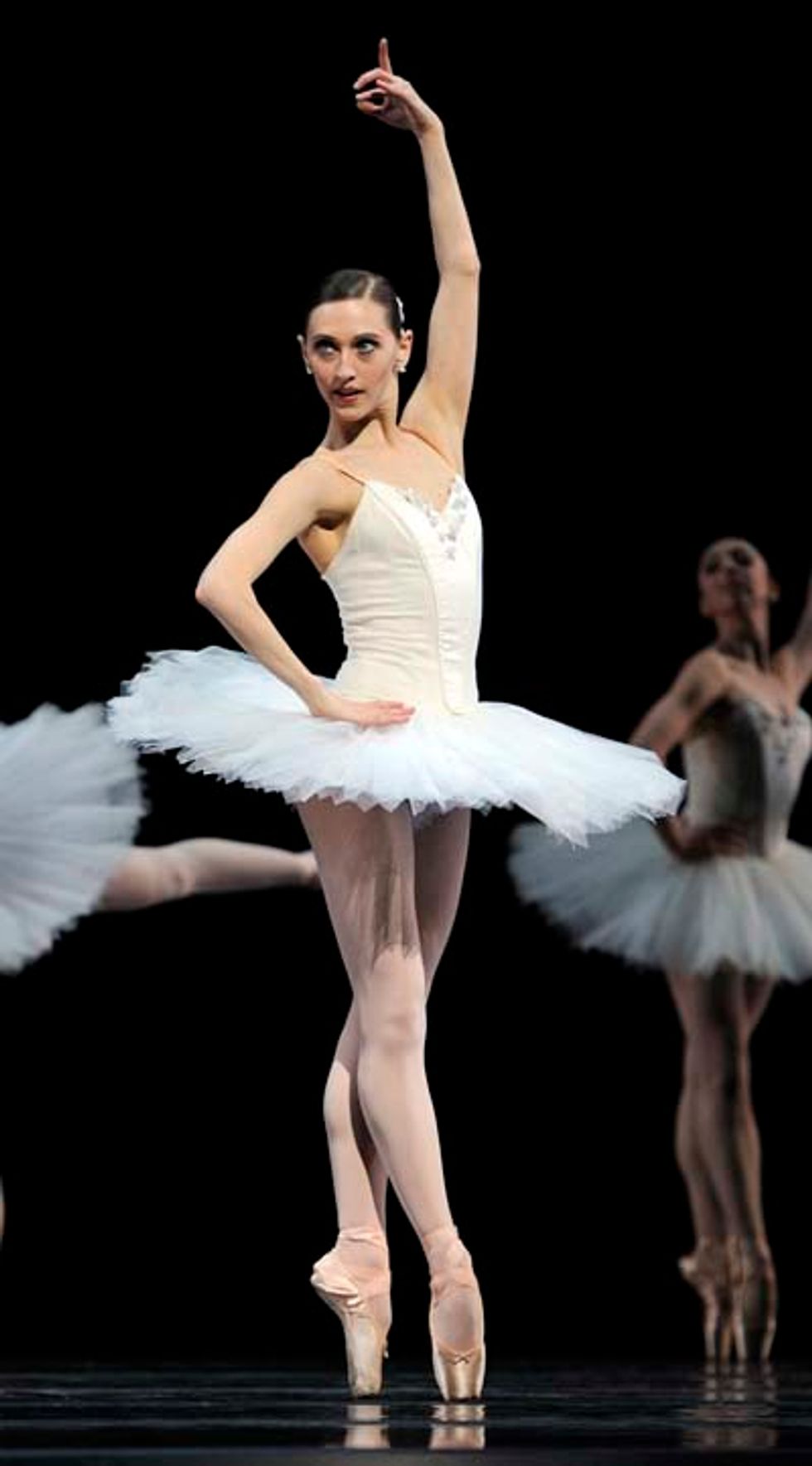
Former prodigies who, like Peck, have made the transition have various answers. San Francisco Ballet principal dancer Sarah Van Patten joined her first ballet company, the Royal Danish Ballet, at 15 and was immediately cast by John Neumeier as the heroine in his Romeo and Juliet. She credits her strong early training, the emotional support she received and her all-around resiliency for her continued success. “You need the right people around you and the mental strength to withstand what it takes physically and emotionally to have a professional career,” says Van Patten. She also credits SFB artistic director Helgi Tomasson for the way he has helped shape her career. “You grow with the work you’re given,” says Van Patten, who has danced Giselle, Tatiana in Onegin and Neumeier’s The Little Mermaid, among other roles.
Left: Sarah Van Patten in Serge Lifar’s
Suite en Blanc. Photo by Erik Tommason, Courtesy SFB.
Peck, in turn, cites her early eclectic training—in addition to private ballet lessons with Alla Khaniashvili, Peck studied jazz, contemporary, lyrical and tap—which she believes served her in a company where choreography is prioritized. “In jazz you go for everything,” says Peck. “You don’t worry about hurting yourself. A lot of other people in NYCB were afraid to try things.” Peck also credits Suki Schorer, who taught her at School of American Ballet, and NYCB ballet master Susan Hendl with helping her develop the sophisticated use of her port de bras.
A critical turning point for Peck (and for others who questioned her esthetic maturity) came when Christopher Wheeldon featured her in Carousel (A Dance), partnered by Damian Woetzel, at 17. “I was always given ‘turny, jumpy’ roles,” she says. “I knew in my heart I preferred the more lyrical numbers, so I was so happy when given the opportunity to dance a beautiful pas de deux. It was the first time I thought I could be a ballerina.”
But along the way, Peck saw other gifted students falter, such as fellow SAB graduate Ashlee Knapp (chosen by Teen People magazine as one of “20 Teens Who Will Change the World”). “She was this huge prodigy who got injured,” Peck says. “And it didn’t end up working for Kathryn Morgan, a former soloist with NYCB. There’s pressure that comes with being in a company, and people deal with it differently.”
When the Spotlight Disappears
That pressure can take many forms. Few young talkabouts realize how completely the spotlight can vanish during their first years in the corps. For some, the newfound anonymity is too frustrating. But others who initially struggle with company life find their footing later. Having won a slew of honors, including the gold medal at the 2012 International Ballet Competition in Varna, Washington Ballet dancer Brooklyn Mack still rejects the title “prodigy.” Although he didn’t begin ballet lessons until age 12 with Radenko Pavlovich in Columbia, South Carolina, he had such natural coordination, ballon like a Wham-O Super Ball and the ability to absorb style and technique
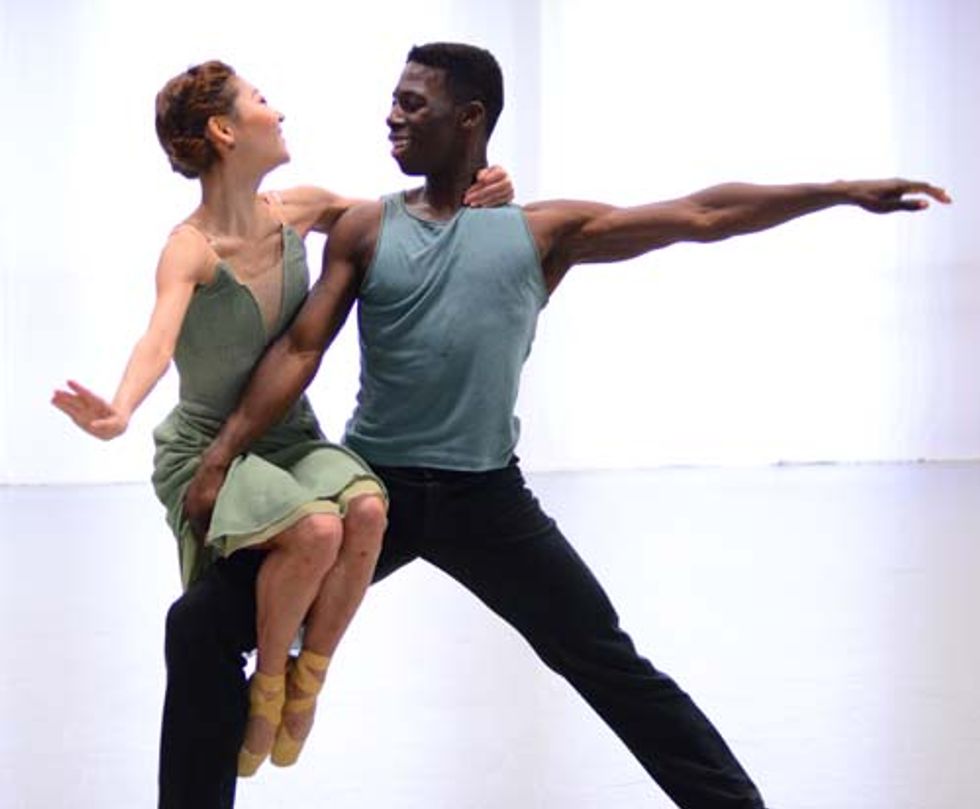
like a sponge, that he quickly caught up. But the biggest challenge in his first job as an apprentice with the Joffrey Ballet was the transition from student to professional, a period defined by marking time as a third cast understudy in the back of the studio and a general lack of attention from the artistic staff. “In a company they expect you to know how to do everything,” he says. “Not a lot of time is invested individually. The people who get attention are the ones who are most accomplished already.” For some wunderkinds, for whom attention means everything, that lack of guidance and coaching can sour into disillusionment with the profession.
Above: Brooklyn Mack partnering Maki Onuki in Christopher Wheeldon’s
There Where She Loved. Photo by Paul Wegner, Courtesy TWB.
For Van Patten, her life experience became the conduit for enriching her artistic expression, something she finds especially marked in her approach to Romeo and Juliet. “At 15, I didn’t have much to pull from in the crypt scene,” she says. “Now I have 15 years of dancing professionally and having family members pass and other things in my life happen.” She recalls her naiveté when dancing Romeo and Juliet for the Queen of Denmark without a hint of nerves. “I had no idea what was going on. If I did that in my early 20s, I would be so nervous. You get into your 30s and gain a little perspective and realize that it’s a performance, not heart surgery, and go on to the next one.”
As for advice for baby ballerinas who want to last until 30 and beyond, Mack, now 27, advocates “finding your inspiration and self-motivation and never letting go of it for anything, no matter what is said to you, no matter the amount of attention you’re getting.”
Van Patten, in turn, stresses the commitment through the drudgery. “It’s so important for you to be absolutely 100 percent passionately in love with ballet,” she says. “It’s way too hard if you aren’t. It seems very glamorous when you’re young, but you need to accept that there’s a lot of physical and emotional pain that goes into it. It’s very rewarding, but it takes so much work.”
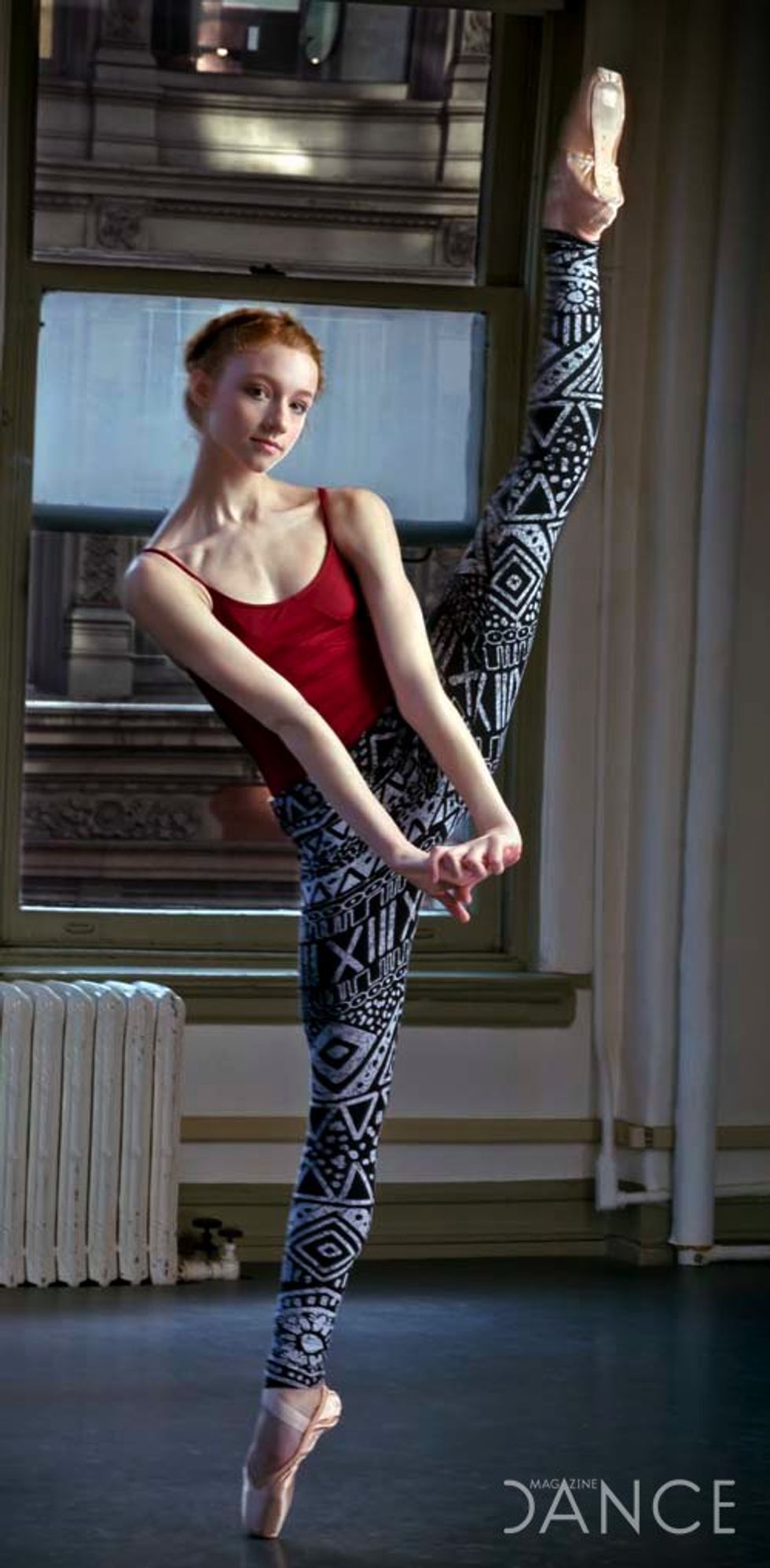
Charm and Charisma: Catherine Hurlin
Catherine Hurlin, now an 18-year-old apprentice with American Ballet Theatre, started training at 4 at Scarsdale Ballet Studio and later with Kelly Burke at Westchester Dance Academy, becoming a competition phenom. Her mother, Denise Roberts Hurlin, a former Paul Taylor dancer, now heads Dancers Responding to AIDS. Hurlin danced Clara in both the Radio City Christmas Spectacular and the premiere of Alexei Ratmansky’s The Nutcracker for ABT. After training with Franco De Vita at ABT’s Jacqueline Kennedy Onassis School from age 11, she joined the ABT Studio Company. Her onstage charisma has made people take notice of her preternatural technique and artistry. Here she talks about the prodigy experience.
Left: Hurlin in the ABT studios. Photo by Jayme Thornton.
Did your mom teach or coach you as a student?
She’s not a “Dance Mom.” She’s not the person who would correct me technically if she was watching a class. She has given me very good, professional advice on my career, like how I should act, what I should do.
Did ballet technique come easily to you?
High extensions, flexible feet, but that’s from birth. Turning came naturally because in competition school you have to do all those crazy turns. What didn’t come naturally was turning on pointe. That had to evolve. I still to this day think I don’t have the talent that everybody else thinks I have. I still tell myself, “You have to work on that, you don’t look good in that.”
Did anyone ever use the word “prodigy” to describe you?
Maybe. I’ve gotten so many great opportunities at JKO with Franco De Vita. He made me who I am. I guess I have been very fortunate if people have called me a prodigy, but I don’t really believe it.
Did doing those competitions give you a different approach to ballet?
I think that when you’re only trained in ballet your whole life sometimes there is a tendency to just think about the technique and steps, especially when performing. I think that what the competition school taught me is you have to sell it, and you end up having lots of fun with it.
Have there been physical changes to your body as you’ve gone through your teen years that you had to adjust to?
I’ve had multiple growth spurts. I’m 5′ 5″ now. My legs have grown like weeds. When you grow, things get out of balance and you have to adjust to it, especially when you’re turning.
Was it a big adjustment going from the ABT Studio Company to the main company?
In Studio Company I would always say I would just kill to sit down for a minute because you just keep going and going. Now that I’m an apprentice and third cast for every ballet, I’m sitting in the back and wishing I could get up and dance. I guess class is the only time I get to shine.
Has it been difficult convincing people that you’re not a kid anymore, that you are now an adult professional?
If you’re talking about people who aren’t dancers and know me but I don’t know them, they would say, “How is ABT? You’re so good!” But if you’re talking about people in the company, they treat me like an apprentice.
How would you like your career to look?
I think anybody’s dream path is to become very successful and a principal dancer. I’m obviously one of those people. I also can still see myself as very happy in the corps, but I think that now just because I’m happy to be here—period.
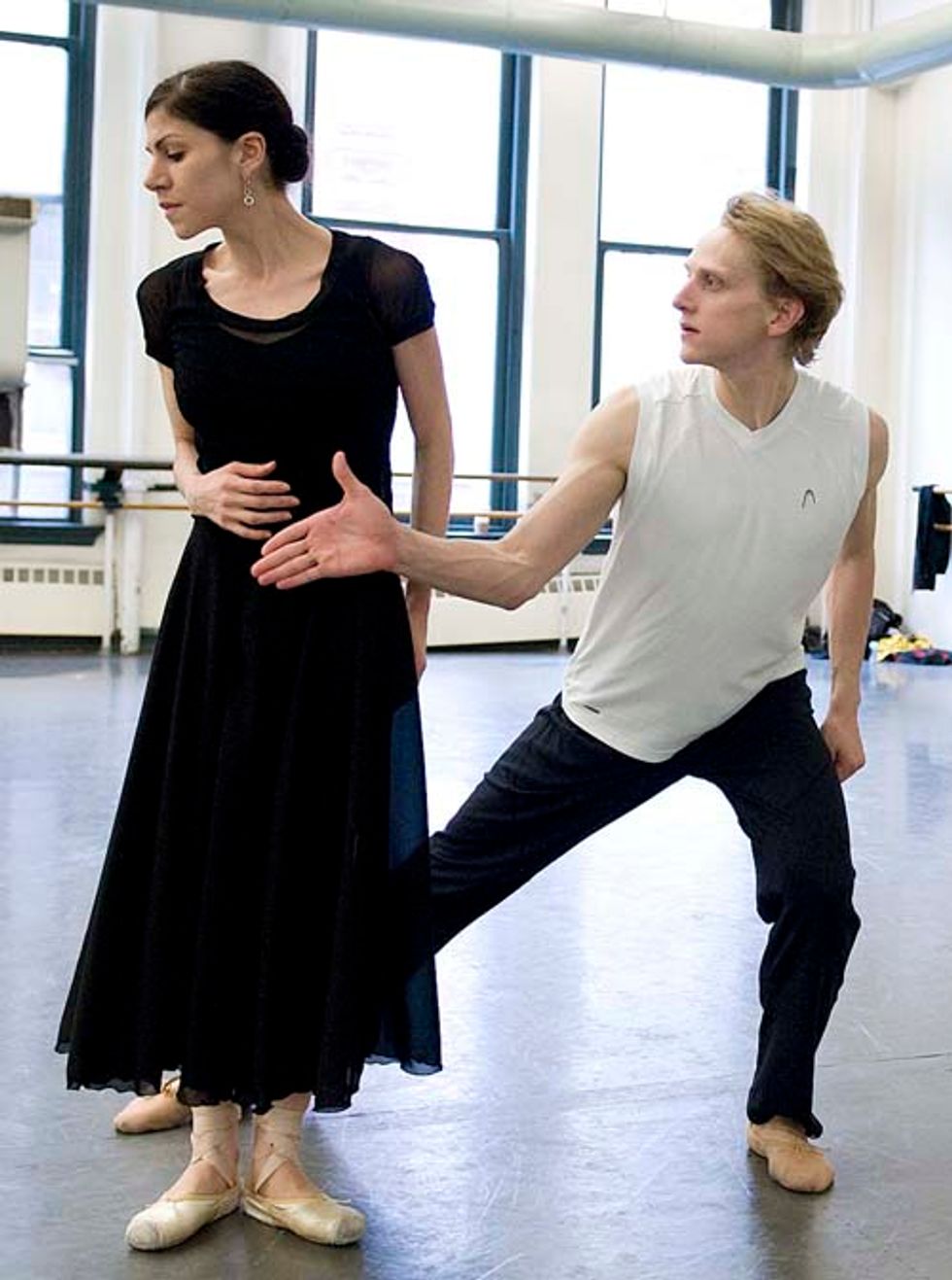
Nuance and Poise: Paloma Herrera
At 14, Paloma Herrera was a finalist in the 1990 International Ballet Competition in Varna. Trained in Buenos Aires by Olga Ferri, a celebrated former ballerina of the Teatro Colón, Herrera became a child sensation when she joined ABT at 15, quickly performing lead roles in ballets such as Theme and Variations and Don Quixote. Now 38, she reflects on her beginnings as a prodigy and how she progressed from baby ballerina to mature artist.
Right: David Hallberg rehearses Ratmansky’s
On the Dnieper with Herrera. Photo by Gene Schiavone, Courtesy ABT.
Did you think you had special gifts as a child?
I thought I was a normal kid doing ballet. But my relationship with my teacher was very special. I never missed a class. From the beginning, I was very focused. I went on pointe at 9. At age 10, I was winning competitions in South America—open from young kids to age 40. I didn’t even care about winning them. In my family, nobody’s a dancer, nobody pushed me.
Were there challenges as your body changed as a teenager?
I think it comes with the territory. It’s a huge adjustment from school to a company, and people start getting injured. I always felt lucky not to have big injuries.
Who were your most important mentors as a professional?
Irina Kolpakova was my coach when I joined ABT—Amor in Don Quixote was my first solo. She’s been a huge inspiration to me ever since then. Kevin McKenzie is the other mentor. He trusted me from the very beginning. He took chances with me.
Was it difficult convincing people you weren’t just a kid anymore?
I never really had to go through that process. I see that with people who do guestings and who dance all over the world and become famous. I wanted to stay at ABT. I’m in a company where you have to be an artist—that’s why I’ve stayed so long. Some people say it was wrong to get in at 15. But I was able to grow up at ABT.
One thing that really helped was to have choreographers take a chance on me, like Twyla Tharp in How Near Heaven. It turned out to be a turning point for people who saw me as a prodigy who could only do classical stuff.
What advice would you have for baby ballerinas who want to mature into adulthood?
Nowadays, a lot of kids can do all the steps. That makes them a big deal. But it has to come from within yourself. You want to keep growing. It’s not enough to just be special and have the attention. If you want the attention, that’s all you’re going to get. You’re a prodigy and…that’s the end. You have to really love what you do and always want to make it better. I’m always happy to be on the stage and working. That fulfills my soul.
